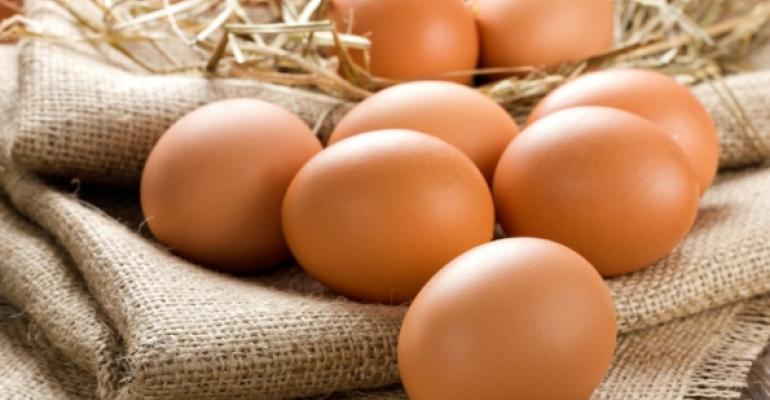After egg prices skyrocketed in 2015 because of an avian flu outbreak in the upper Midwest, supply and production are expected to return to more normal levels this year, experts said Tuesday.
“As we enter 2016, all indicators point toward plenty of eggs and egg products being available for foodservice use,” John Howeth, executive vice president of the American Egg Board, an industry trade group, said in a statement. “And barring any further incidents, we expect egg supply and pricing to return to their previous consistency.”
The U.S. Department of Agriculture is forecasting an average price for large eggs of $1.66 a dozen in 2016, a decrease from the 2015 average of $1.84, but higher than the $1.42 in 2014, before the past year’s avian flu outbreak that hit producers in Iowa and Minnesota especially hard at mid-year.
The effect on restaurant supply chains was immediate. In June, 770-unit Whataburger Restaurants LLC of San Antonio took the unprecedented step of reducing its breakfast hours to deal with the national egg shortage.
Whataburger, which operates in 10 states, reduced its breakfast hours to 5 a.m. to 9 a.m. on weekdays and 5 a.m. to 11 a.m. on weekends. It previously offered breakfast from 11 p.m. to 11 a.m. daily. By autumn, the company had restored its supplies and returned to its regular breakfast hours.
DeWayne Dove, vice president of risk management for SpenDifference, a Denver-based purchasing cooperative, said at the time that the outbreak of the H5N2 virus, mostly in the Midwest and especially in Iowa and Minnesota, resulted in the destruction of 44 million birds, or 13 percent of the total domestic flock of egg-laying hens, as well as 4 percent of the turkey flock.
John T. Barone, president of Fairfield, N.J.-based supply-chain consultancy Market Vision Inc., told Nation's Restaurant News Tuesday that many observers expected to see some more avian flu infections in late October, November or December, but those were not seen.
“We’re not sure if it’s contained or it’s just it’s been so warm that temperatures haven’t promoted the spread of virus,” Barone said. “If we get through the current cold snap in the Midwest unscathed and the virus does appear to be under control, we will see pretty good egg production and recovering volume in 2016.”
That return to normal production has moved prices downward.
“Prices were in pretty good shape until the virus hit last year,” Barone noted, “and then they went absolutely nuts.”
The virus last year was concentrated in the upper Midwest area, mostly Iowa and Minnesota, and especially affected liquid eggs, which are processed in that region, he said.
Prior to the avian flu problem, Barone said, U.S. producers had exported a lot of fertilized eggs to Mexico, which had experienced the avian flu before U.S. producers. “Right now, our layer flock is finally starting to catch up a little bit,” he said.
The replacement flocks will likely provided easing of prices beyond this year, Barone added.
The layer flocks are tiered to accommodate the hens’ productive life. With the younger hens replacing the older flock, which was less productive, producers will likely see more egg production, he said.
“We’re not only building the number of layers but building a large number of younger, more productive layers,” Barone added. “So there’s a feeling that ’16 looks pretty good and ’17 looks even better on egg prices, given there is no disruption in supply like we had last year.”
The American Egg Board also said “egg imports, fewer exports and unaffected farms increasing production have all contributed to help with the supply gap.”
The Egg Industry Center in Ames, Iowa, reported that half of layers lost in 2015 are already replaced, and “the flocks should be at or near 100 percent pre-outbreak levels” by midyear.
Contact Ron Ruggless at [email protected].
Follow him on Twitter: @RonRuggless





